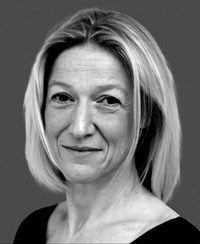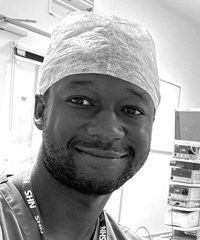ENT features
The ENT operating theatre viewed down the retrospectoscope
We learn much of our future by looking at our past; Douglas MacMillan provides us with a fascinating glimpse into his years as a junior doctor. The operating theatre was a somewhat alien environment in the late 1960s: theatre sisters...
The HEARO Procedure for cochlear implantation
Cochlear implants have become the state-of-the-art treatment for profound to severe sensorineural hearing loss. Since its popularisation, many aspects of this technology have constantly been optimised. Processors have become smaller, are worn behind the ear and are even water resistant....
History of innovation in ENT
Innovation seems to have been in the strapline of every meeting, conference and course for the last few years. You would be forgiven for thinking it is a new a concept, but as Neil Weir beautifully details, innovation has been...
OBITUARY: Bernard Colman (1924-2020)
Bernard Colman at his leaving party at the old Radcliffe infirmary in 1989, which was his retirement year. Born above a corner shop in Wolverhampton on 17 October 1924, Bernard Colman entered Wolverhampton Grammar School in 1933 but left early...
OBITUARY: Alan Gibb (1919-2020)
Alan Gibb, who passed away on 5 September aged 101, was the Grand Old Man of British Otology. He slipped quietly away at home on Deeside from the long-term consequences of a stroke about two years ago, from which he...
COVID-19 innovations
The coronavirus pandemic has mobilised medical innovators in an amazing way. We take a look at just a few of the hundreds of innovative products and techniques that have been developed and used in the last few weeks. Some of...
Wilde and the foundations of medical epidemiology
William Wilde (father of Oscar) was renowned as an otologist, but less well known for his work in epidemiology. The bedrock of the modern discipline of public health is good data collection, and we hear from our good friend, Ray...
OBITUARY: David Moffat (1948-2020)
David Moffat, one of the leading Otologists of his generation, died on 18 March in Addenbrooke’s Hospital in Cambridge, the hospital to which he had devoted his professional life. Having survived cancer of the prostate, he succumbed to a second...
The cochlear implant clinic multidisciplinary team meeting
The world’s first cochlear implant clinic was in Melbourne, where multichannel devices were designed by Graeme Clark at the beginning of the cochlear implant era. We are fortunate to hear from Claire Iseli and Rob Briggs, surgeon members of this...
By the people, for the people: a multidisciplinary facial nerve clinic with a difference
Facial nerve palsy is regularly seen in ENT clinics. Underlying diagnoses are excluded, and the patient is often then discharged to ‘see how it goes’, with or without an ophthalmology referral. Here, Catherine Meller describes how she and her team...
Addressing ear and hearing care through task sharing: the Malawian experience
How can ear and hearing care be addressed in a setting with limited resources? Wakisa Mulwafu, Chris Prescott and Johan Fagan present an innovative model for training ear surgery technicians to perform endoscopic myringoplasty under local anaesthesia on a large...
Acoustic shock: definitions and clinical aspects
Acoustic shock, a previously little-known and poorly understood clinical entity, came to the public’s attention in 2019 due to a high-profile legal case of a musician at the Royal Opera House. In this fascinating article, Andrew Parker and William Parker...




















